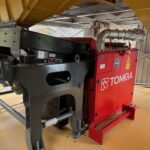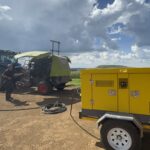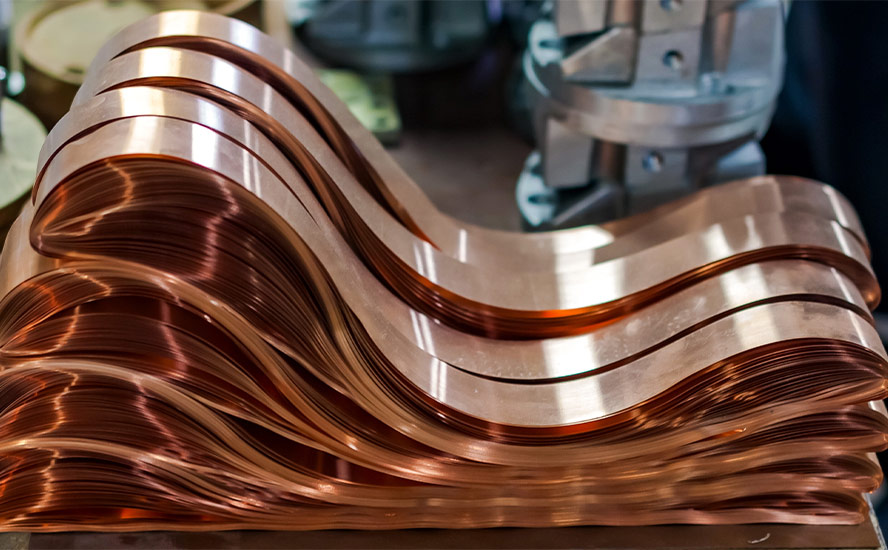The chief geoscientist with leading global mining-tech company IMDEX has issued a clarion call to the mining sector to restore its damaged image and shake off its risk-averse approach as he warned there was widespread ignorance of the scale of the imminent copper supply crisis.
Dr Dave Lawie, Chief Geoscientist and Chief Technologist – Mining Solutions with IMDEX, in an address to geoscience students for the University of British Columbia’s Earth, Ocean and Atmospheric Sciences Department, said the mining sector needed to effectively communicate its role in finding the metals and minerals, including copper, needed in a low-carbon future to address the copper supply crisis. Failure to do so risked the future of decarbonisation and accelerated electrification.
“I have a saying for our industry at the moment. It can’t read the label from inside the bottle. On the outside of the bottle it says, ‘save the world’, but we can’t read the label,” Dr Lawie said.
Finding enough copper to meet future copper supply crisis was a problem “that needs the best minds on the planet to think through.
“That’s the challenge for all of us. Living in a world where we need to talk to people about what the mining industry and geoscience need to do to address the copper supply crisis and save the world is very difficult when I read a survey that says kids think milk comes from a supermarket.
“So, if they think that, try asking them where the copper comes from for their iPhone. “They won’t know; they just won’t have thought of that as a concept. But that’s not their problem. That is our problem.
“We are an incredibly bad industry at communicating with the general public about the copper supply crisis. Terrible, abysmal.”
In a wide-ranging presentation, Dr Lawie compared the likely future demand/supply scenarios for critical minerals to meet net-zero emission targets to those for copper.
“Solar and wind would have to grow 20 to 30 times to deliver the amount of electrification the US needs to decarbonise by 2050 or go carbon neutral by 2050. When I see that I think where is the copper going to come from?” Dr Lawie said.
“To supply the demand for electrify electric vehicles by 2040 we’ll need 42 times the amount of lithium, 25 times more graphite, 21 times more cobalt, 11 times more nickel and seven times more rare earths than we are producing now.
“Now I only find that mildly disturbing because when I look at those commodities I think: Lithium no one’s looked for seriously – ever – and in fact we can find new lithium. Lithium mines we can bring into production. We’re actually finding lots of lithium hard rock deposits at the surface in Australia.
“Australia has increased its hard rock lithium production immensely in just a matter of two or three years. We can respond; it doesn’t worry me at all. Same with graphite. We haven’t really seriously looked for graphite. We’ll fix that. Cobalt is an issue, particularly with mining in the Democratic Republic of Congo, but we can we find 20 times more cobalt, not a problem geologically.
“There are cobaltian pyrite deposits sitting at the surface all through the Curnamona Block in Australia. Increasingly, cobalt is being recovered as a byproduct of nickel laterite mining.”
Cobalt prices have declined this year amid a drop in demand, the possibility of a change in battery technology with less reliance on cobalt, and some miners increasing production.
“Lithium, nickel, cobalt, graphite, manganese, rare earths; don’t worry about it as a geoscientist, Dr Lawie said “Copper? Worry a lot because that is where the problem is going to come.”
He said declining copper grades meant more waste and increased use of water and power to maintain existing supply rates, but current copper mining rates were not enough to cover demand for existing uses without factoring in “the electrification of everything” in a low-carbon future.
Better data from ore body knowledge could help unlock some of the stranded copper assets worldwide that are not constrained by ESG issues. “Barrick has gone back into Reko Diq (gold and copper mine) on the border with Pakistan and Afghanistan.
That tells you something about the risk appetite and that the looming copper deficit is true. Some companies are really making the effort. That is a giant deposit. Given its geopolitical complexity, if it could be (released) it would be a big win for a copper supply of the future,” Dr Lawie said.
“In 2021, we used about 20 to 23 Mt of copper, but some projections have that demand going to 30 Mt by 2030. How on earth are we going to go from 22 Mt of copper to 30 Mt a year? “Kamoa-Kakula copper mine (in the DRC) is the largest mine that has come on line for some time and will produce half a million tonnes a year.
“We need two Kamoa’s a year for the next 10 to 15 years to supply the copper we need to decarbonise. Of those 22 Mt of copper, the four largest producers of it are Chile, Peru, Congo and China. None of those countries you would call great exemplars of democratic governance and stability.
“So, of the current supply, apart from the geological problems of securing more supply and putting it into production, the existing resources are under threat. This is a very finely balanced supply consumption equation.
“We can’t risk copper supply chain delays or our want and willingness to expand solar, and wind electricity production won’t happen.
“If you think that the industry is responding by ramping up exploration budgets massively and getting to work, it sort of is and isn’t. What we’re doing is within the realms of what our industry conventionally does in the face of these things which is not much actually because we’re still risk averse.
“Of course, the more political problems you have in a jurisdiction, the less likely you are to want to go out and spend $10 billion.
“As a reflection of our industry, about half the total global exploration expenditure still is spent on gold.
Next would be copper. The amount of exploration spending on copper is increasing, but not really anything that’s going to make a difference. “The message for my mining industry comrades is, I just wonder if our industry can actually do anything about this?”















